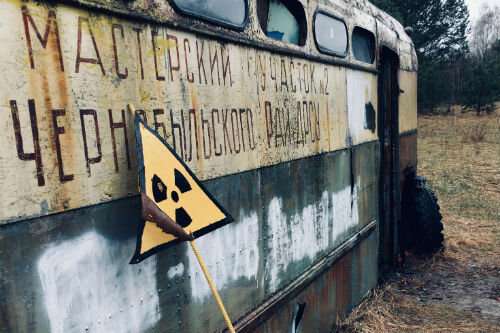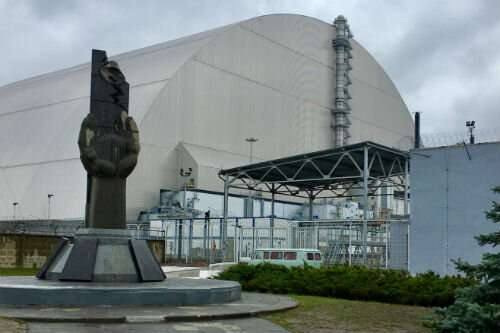Researchers venture to the Chernobyl Red Forest

A multidisciplinary group of researchers from the University of Bristol, as part of the National Centre for Nuclear Robotics, recently traveled to the Chernobyl exclusion zone, 33 years after the nuclear accident at the power plant in Ukraine.
The team carried out a series of radiation mapping surveys using unmanned aerial vehicles (UAVs) including the first ever UAV to map both gamma and neutrons as well as a first ever fixed-wing (aeroplane style) UAV-based radiation mapping survey. This has led to radioactive hotspots being identified that were previously unknown to local authorities.
Professor Tom Scott from the School of Physics led the group who conducted surveys of numerous interest areas, including Buriakivika village. This settlement was abandoned following contamination from the power plant accident as it sat in the centre of the fallout plume west of the power plant.
Speaking about the trip, Professor Scott said: "This trip has provided a great training opportunity for my PhD students and is an excellent demonstration of capability for UK robotics and sensor technologies."
The accident at the Chernobyl nuclear power plant occurred during the early hours of Friday 25 April 1986 during a test on the Chernobyl 4 reactor prior to a routine shutdown. Unknown to the operators, the reactor core was in an extremely stable condition when they went to insert the control rods to shut down the reactor. As a result, there was a dramatic power surge that caused explosions of steam that ultimately exposed the reactor core to the atmosphere.
Previous University of Bristol research into the accident includes the J-Value Rating Service For Assessing Nuclear Safety Systems, which assessed that only 10-20 percent of the 335,000 people evacuated from the Chernobyl area needed to be relocated.
The gamma-ray spectrometry technology developed by the University of Bristol has previously been used in the first-ever UAV mapping of the Sellafield site in the UK and has also been deployed numerous times in the Fukushima Prefecture in Japan.

Provided by University of Bristol




















